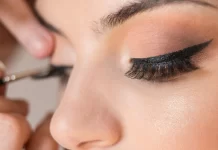Two-piece design gowns are favorite wardrobe components for most women. From mini, midi, to maxi sizes, designers have them in full sets. These dresses are designed to trend perpetually. These wonderful two-in-one pieces consist of tops and a skirts. For ultimate stylish silhouette, they are worn in the designed pairs which match perfectly. They feature the hottest patterns and prints like the bold in block hues, laces, punchy prints etc. These styles are all a woman’s wardrobe need. During the making of two piece dress set, the following elements are evident.
- The Sizes
Designers always take the measurements of a client. The units used for measurements are never changed to avoid any confusion during sewing. Hand- made two-piece dresses may not have a similar size as that of ready-to-wear dresses that a woman owns. The style and patterns differ significantly from the second-hand clothes which use international size codes.
- Space allowance for alterations
 The patterns of two-piece designs consist of fitting allowance called the ‘designer ease’. For knit fabrics, the allowance is not catered for because the fabrics can stretch naturally. If you read on the instructions about the pattern, you will see the allowance specifications. To determine the allowance for alteration, designers use a client’s body measurements. If a client wants to change the size, the allowance comes in handy. The allowances also dictate the final design of a two piece gown and determine if it is going to have a close or loose fitting.
The patterns of two-piece designs consist of fitting allowance called the ‘designer ease’. For knit fabrics, the allowance is not catered for because the fabrics can stretch naturally. If you read on the instructions about the pattern, you will see the allowance specifications. To determine the allowance for alteration, designers use a client’s body measurements. If a client wants to change the size, the allowance comes in handy. The allowances also dictate the final design of a two piece gown and determine if it is going to have a close or loose fitting.
- The grain lines
They are synonymous with the orientation of selvage ends. It is a long straight line whose two edges contain arrows. These arrows indicate the direction that the pieces get laid on the weave grain or the direction of the material. In stretchy fabrics, the arrows point in the direction which stretches the most. If you find out the selvage edge, you will see the grain line.
- Notches
Notches are triangular indicators along cutting lines of two-piece dress sets. They are used in matching of panels. They come on triples, doubles, or singles. Designers create small perforations into seam allowances so as to align the pattern pieces. Single notches represent the anterior side of a dress while double notches show the backside.
- The dots
Dots are indicators of the locations of gatherings, pockets, darts, and zippers. The circular dots show places that tacks need to be located for the arrangement of double fabric layers. Zips are usually marked with zigzag patterns.
- Button marks
They are spotted as X and the corresponding button holes with a bracket mark – the real size of the hole.
- Lengthening and shortening lines
 These are close parallel lines that indicates an allowance in an attempt to enhance the fit. These lines differ in sizes depending on the patterns.
These are close parallel lines that indicates an allowance in an attempt to enhance the fit. These lines differ in sizes depending on the patterns.
- Cutting lines
It is a bold line that is drawn outside a pattern. Designers cut the fabric along this indicator. When the lines are many, it shows that the gown can be cut in a number of sizes.
During cutting, earmarked scissors are used and they must be sharp enough since fabrics make them blunt easily. If a designer slips in cutting a piece, the piece is taken back in the best way possible to ensure that the shape remains and markings don’t get lost.
- Sewing line
This is a dotted line that shows where sowing commences. The standard sewing starts 15mm in the cutting line; so, the sewing line can be left out sometimes.
- Fold lines
They are precisely marked using a unique bracket or line to show where a material folds rather than cuts. The fold lines shouldn’t be confused with cutting lies.
Two piece short prom dresses are eye catching but most wearers hardly understand the intricate stitching involved in their production. This article hopefully enlightens client and those who aspire to design their own dresses.



















